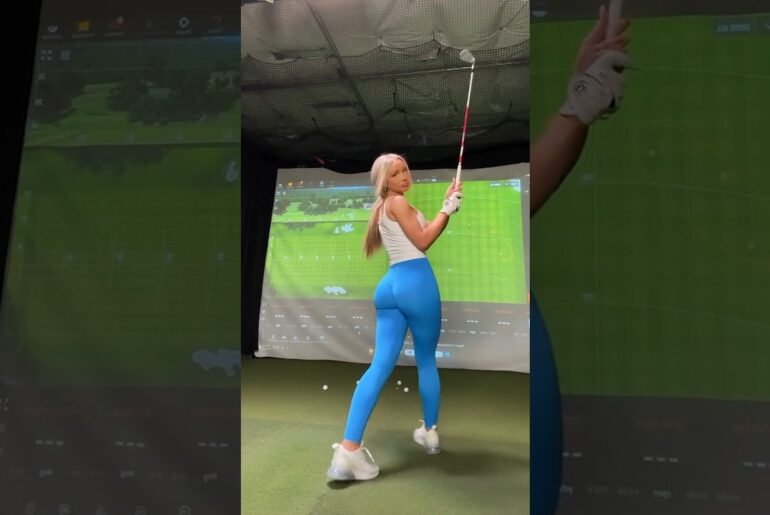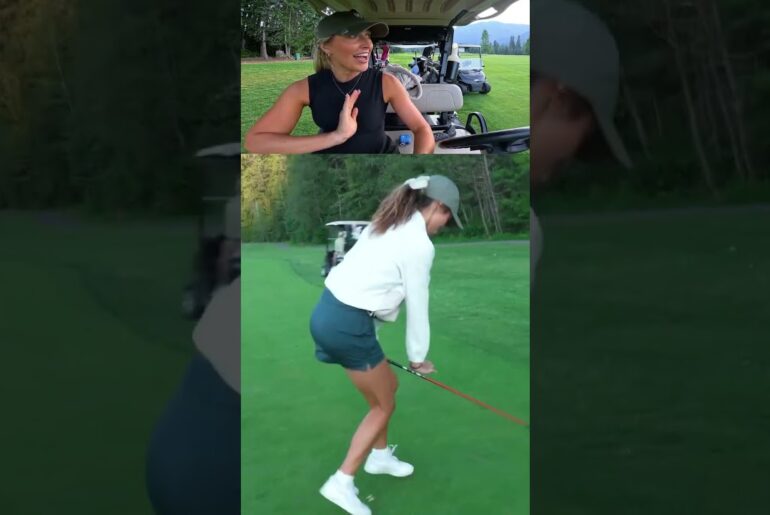Mind Caddie – FREE 7 DAYS TRIAL
https://mindcaddie.onelink.me/7xjx/pb82yidc
Golf isn’t just a physical game — it’s a mental battle. In this video, we break down a powerful golf psychology principle: feeling comfortable with being uncomfortable.
Whether you’re in the middle of a great round or grinding to save par, your ability to manage nerves and stay focused makes all the difference. Learn how to reset after mistakes, control emotions, and stop sabotaging a good scorecard.
If you want to play more consistent golf, manage pressure, and improve your mental game, this video will give you practical tips you can use right away on the course.
👉 Don’t forget to subscribe for more golf psychology, mindset strategies, and tips to shoot lower scores!
These golf psychology sessions with a PGA Tour golf psychologist who’s worked with six major champions will improve your golf and lower your handicap. So after the success of the first series, we’re back at Delmare Forest. We’re back meeting Carl Morris today with some more absolutely fantastic golf psychology advice. Remember, all of these golf psychologies are sponsored by Mind Caddy, where you can get advice from Carl 247 on the app. Right. In today’s video, and this is something that is really sort of relevant to me right now. Yeah. Is how to deal with doing well. So, it’s I think there’s a you know, there’s a great quote, isn’t there? is starting to feel comfortable with feeling uncomfortable. So, you know, I’m starting to play some good stuff now. Uh I’m turning 55 next year. I can’t wait to go and have a look go at some of the big national senior comps. Want to really give it my best shot. Now, in order to do that, I’m going to need to shoot some really low scores. And I’m definitely got the game to do it. But unlike when I was younger and I’d get three under on the front nine that I used to just relax. It almost used to it used to just make me feel like I’ve got a buffer here. I’m just you know and then I just continue to play well. Whereas since I stopped playing for 15 years and back and obviously when you’re older you you know you tend to think about things a bit more. Uh I I start to feel uncomfortable when I get to 300 under par. What sort of methods can you imply to try and help deal with that? I think the key thing with that is to understand something called loss aversion. That as as we get older, not necessarily as we get older, but most human beings will do a lot more to avoid losing something they think they own rather than pursuing something that they’ve not got. So, we’ll do we’ll do more to hang on to the 20 quid that we’ve got than the chance of making 100 quid. And it sounds counterintuitive, but what you’ve just described is that that you’re on the golf course and you get to two or three under and it’s like, I’ve got to hang on to this now. That’s so true. Now you’ve said it, that is so true. Got I’ve got to hang on to it. So then your your brain goes into avoidance mode then. You don’t want you don’t want to lose what you think you’ve owned or you think you own. So I’m delighted to say that the Scratch at 50 psychology channel has partnered with Mind Caddy. Mind Caddy is an app that gives you access to one of the world’s leading golf psychology coaches who’s worked with six major champions and hundreds and hundreds of PGA Tour DP World Tour players from all over the world. Watch this video to the end where you can get a special offer to get access to Mine Caddy today. So, what you got to do is change the reference of that and it’s it’s all about what we perceive the task to be. Now, if you’re going out there and you think your task is to sort of shoot a low score and you get to two or three under, oh, that’s a that that would be great if I could get So, we’re avoiding that. Yeah. So, one one tool that we’ve used with a lot of players is to change the reference that when you go and play golf, instead of seeing a golf course as being 18 holes made up of two sets of nine is play a game we call super six. And super six and you can mark it on your scorecard. You go out before you play. Your job, you’re not playing one game of 18. You’re playing six games of three holes. Yes. And the your job is is to shoot as low as you can and do as well as you can on each set of three. Okay. So when you finish one three, whatever’s happened there, that’s finished. That’s the game over. You start again. Now, the good thing from our brain perspective, our brain loves the idea of a fresh start, right? A new beginning, you know, New Year’s resolutions, second half, first, all that kind of stuff. So you can think, you can imagine now instead of being, oh, I’m two under after 13 or three under after whatever it is. No. Right, I’ve got my next set of three to play. How well can I do on the next set of three? So you’re boxing the the round into smaller chunks as opposed to this bigger picture. Yeah. So So yeah, so three under for the first six. Then you just you’re parking that away and just saying, “Okay, now there’s a new I wouldn’t I wouldn’t I wouldn’t even use the story anymore of three under after six.” I would I would completely remove that. Just start with because actually you’re not three under after six because if you were three I’d say to players, they say, “I was three under after 12.” And I’ll say, “Well, why why didn’t you walk in?” Yeah. You can’t You’re not You don’t actually own it. No, you think you own it, but you don’t. The only time you’re under par is actually when you’ve signed the card on the 18th. So, it’s changing that reference and saying, “Okay, my job today is just to be really involved in these six sets of sorry, these six sets of three holes. When I finish one set, that’s it. I go on and see how well I can do on the next one.” So, you p you’re pursuing doing as well on the sets of three as opposed to avoiding trying to drop shots. Right. Okay. Yeah, that’s a totally different way. It’s a totally different a different way. It’s the fundamentally with our brain is we’re either in pursuit of something or we’re trying to avoid something. And there’s a different set of chemicals. You know, if you think of you’re looking forward to something, you pursue it. Yes. Different set of chemicals. Oh, I hope this doesn’t happen or I want to avoid that. There’s a different reaction in your body then. So what happens in a round for you when you get into two three under territory and your brain’s thinking, “Oh, I’d like to hang on to this for 18 now. You’re in avoidance mode and that’ll re your body will react in a different way and all of a sudden you can produce shots.” You think, “Where the hell’s that one come from?” It’s come because your brain’s perceiving threat. Okay. Right. So I’m just trying to get clear in my mind. So don’t It’s It’s almost It’s almost like always looking forward, isn’t it? Absolutely. That’s that’s the the key to this. That’s the key to it. As opposed to trying to hold on. Yeah. You know, and the beauty of it is if you mark it on your card, whatever’s happened on the previous set of three, that’s finished. Yeah. Yeah. You’ve got a new game, you’ve got a new task to play. And our brain loves that. Our brain loves a fresh puzzle to solve, right? You know, you could you could think, okay, right, these next three holes, how well could I do on these next three holes? as opposed to, oh, I’ve got three holes left and I’m two under. Completely different mindset. Yeah. Yeah. Yeah. That’s a really good way of looking at it. So, yeah. I mean, that conversation was obviously relevant to me as a sort of scratch golfer, but it doesn’t matter whether you’re off, you know, 12, 18, 27 handicap. You’re all going to be in that position where, you know, you’re doing really well in a round and you start to feel uncomfortable. But like Carl says, if you can split that round up, I know for a fact that Rory Maroy when he when he won the US Open for the first time, he was doing exactly this. He was working on and I think he still I still use it from time to time, he was literally out there just breaking the round into six sets of three and just let’s get to the next one. Let’s go for the next set of three. Yeah. Well, there you go. then break it down in six sets of three and then you’re just giving yourself these short-term goals all the time and you’re not really concentrating on where you are in your round. That is something that I’m definitely going to try. I know that I’m playing well and I know that I can start to turn these rounds into really low rounds by basically just thinking better and giving myself these more short-term goals. Hope you enjoyed that episode of the golf psychology sessions. If you want to get continued advice from Carl, you can subscribe to the Mind Caddy app. Go into the description of this video for a special offer as a viewer or subscriber of the Scratch 50 psychology channel.







